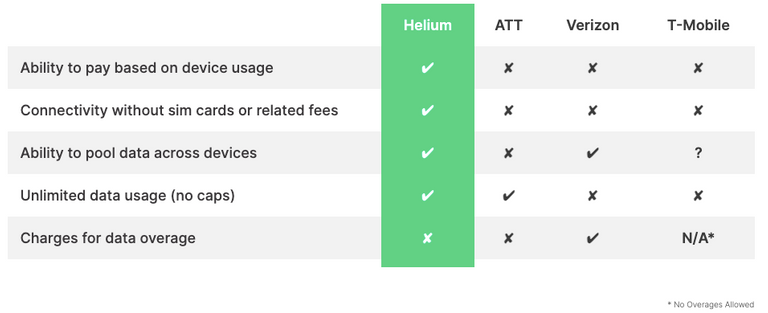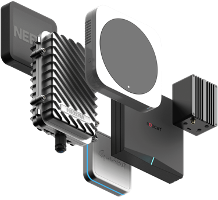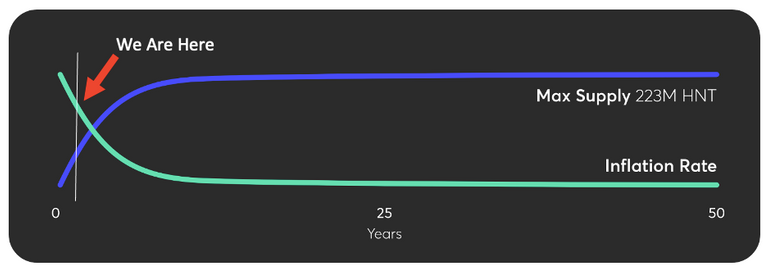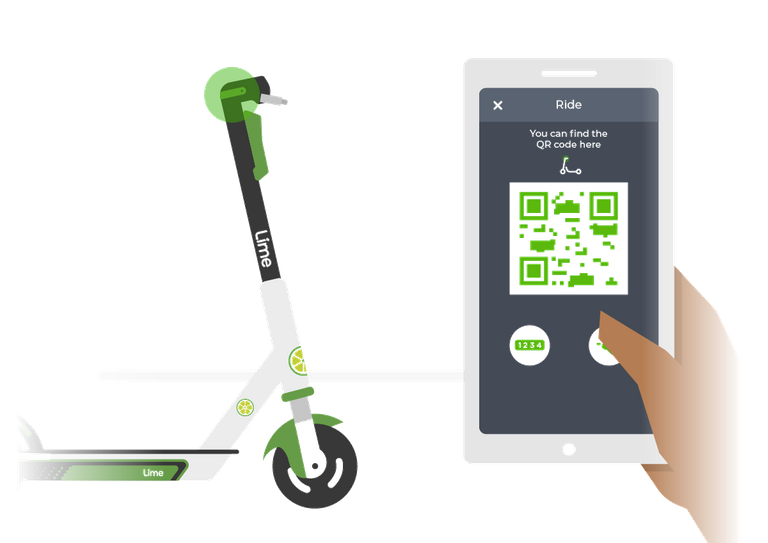Have you ever used a smart thermostat, Bluetooth speakers, a vacuum robot, like Roomba, or you took a ride on an electric scooter that unlocked with your phone? Have you monitored anything else with your phone?
If so, you are already familiar with the Internet of Things (IoT) because all these devices are IoT devices. Imagine you can know the state of everything - the room temperature in any corner of your house, air quality and humidity levels in every room, water pressure in the pipes, the light and sound intensities, your heart rate and blood pressure, and the location of any devices. Being able to monitor all of this and more and doing something with this information is IoT.
IoT device has at least one sensor; for example, a temperature sensor, camera, location sensor. It must communicate this information to a user device through some network.
There are different networks that can be used, such as:
· Wifi
· Bluetooth
· Cellular Network
The problem with Bluetooth and Wifi is that they only work for short distances. For example, the maximum range reachable with Bluetooth is between 10 to 400 m depending on the setup, and for WIFI, it's between 10 to 1000m. The cellular network is provided by central companies and is expensive.
Seeing the problems with these options, in 2013, Shawn Fanning, Amir Haleem, and Sean Carey launched a decentralized network called Helium or "The People's Network." This is the network where IoT devices can efficiently communicate information to the end-user. This network is run by regular people like you and me and NOT central companies like TELUS, AT&T, Verizon, Orange. Helium connects devices at a fraction of the cost of cellular without needing to deploy and maintain wireless infrastructure.
Here is some comparison of Helium with Telcos:

You can calculate the cost per device here: https://www.helium.com/enterprise
How Does Helium Work?
- You can get a helium hotspot and place it at home. Helium hotspot looks like a regular router for your WIFI. However, instead of WIFI, it uses a LongFi that utilizes license-free low radio frequencies that reach hundreds of km and maximize battery life for compatible devices.
This low-frequency signal is free from laws or regulations in many countries, so people can support the network globally. With the low-frequency signal, the data transfer speed is not designed for things like phone or video calls, web surfing or watching videos on your phone or computer. However, it's perfect for transmitting small packets of data, which is just what's needed for IoT devices. To learn more about Longfi: https://blog.helium.com/learning-about-longfi-4b7b36c9bf54
- Now, when helium hotspot is set up, it can receive and send encrypted messages from, to, and between any IoT devices that support LongFi in its range. Helium network is already supporting many devices, for example, Lime Electric Scooter.
- Lime Scooter sends a packet with its location coordinates to a Hotspot. Based on the unique identifier on the blockchain, the Hotspot knows exactly which company this device belongs to and the destination for the packet. The Hotspot then sends a part of the packet to the company's data center via the internet. If the company wants the full packet with the data, the company needs to destroy some of the Data Credits that they initially purchased in the name of the Hotspot, you can think of Data Credits as a gas fee. After that, the Hotspot sends all the data to the destination. That's how you know where any scooter is located and can get the closest one. This whole process is automatic and happens in milliseconds.
The Hotspot

The helium hotspot needs next to no energy, yet it needs to be connected to the internet so that it can transfer messages to the companies' data centers and also synchronize and have the most up-to-date blockchain.
Rewards and Payments

HNT is what hotspots get rewarded for servicing the network. Data Credits are another currency dedicated to paying transaction fees, like gas fees. Data Credits are fixed to a USD dollar (where 1$ buys 100,000 data credits) and the only way to get the Data Credits is by burning an equivalent dollar amount of HNT. When a transaction on the helium network is completed, the Data Credits are destroyed – which in the end reduces the total circulating supply of HNT and increases the value of HNT in the long run.
Proof of Coverage Protocol
There is another financial incentive to get a hotspot and support the network. It's called the Proof of Coverage protocol. Basically, it's an algorithm that verifies a hotspot's location and coverage. The protocol involves three players:
- Challenger
- Challangee
- And Witnesses
The challenger sends a challenge packet to a challengee to verify its location and connection. If the challangee is active, it transmits the packet. When it transmits, the hotspots in proximity "hear" and witness it. These hotspots then report this event to the blockchain, and the challengee is confirmed. In the end, all participants get rewarded in HNT; you can check the distribution percentage here: https://docs.helium.com/blockchain/mining
Overall, the hotspots get paid:
a) For validating legitimate coverage, which is called proof of coverage
b) For servicing and transferring the data on the network.
Right now, a larger amount of rewards are allocated for hotspots participating in proof of coverage (when you set up your helium hotspot, you automatically participate in it). As the network grows, rewards distribution will change over time: the rewards for proof of coverage will decrease, and rewards for transferring data will increase.
HNT Tokenomics:
Helium has a maximum supply of 223 M HNT. At the launch, none of HNT was premined. Founders raised funds for development by selling Helium Security Tokens (HST) to investors between 2014 and 2020. Holders of security tokens are eligible to receive a certain percentage of all mining rewards, which will decrease over time.
The first HNT was mined in July 2019. The initial rate of mining was 5 M HNT/month, and halving is happening every two years. The current rate of mining is 2.5 M HNT / month (2022). The inflation rate is quite large now but it will decrease rapidly over time, as you can see in the chart below. You can think of the HNT inflation model somewhat similar to Bitcoin.

There is also deflationary pressure on HNT because all transactions on the helium network are paid in Data Credits, which are created by burning HNT.
What's interesting, a tiny percentage of these burnt HNT is recycled to be given as a reward to the network providers. This is called Net Emissions. This protocol will ensure hotspots are rewarded even when HNT supply is reached (which will happen roughly in 50 years). It will incentivize people to support the network after the last HNT is mined.
In summary, Helium is a decentralized network that can be hosted by people like you and me rather than central corporations.
It uses a low-frequency signal, LongFi, to transfer data to, from and between supported IoT devices, and that's how you know where your dog or a sent package is or where's the closest electric scooter. It gives businesses a new opportunity to build new IoT devices and integrate them with a cheap and secure helium network.
In the future, the developers hope this network can support 5G, so people can use the Helium network for their phone internet, but that's a topic for a later video…
If you got excited about Helium, check my tutorials on how to set up your helium wallet with Ledger.
I also want to learn what you think of Helium and its future so let me know in the comments!
#helium
#heliumnetwork
#network
#cryptocurrency
#beginnerguide
#decentralization
#decentralized
#decentralisation
#decentralized-internet
#peoplesnetwork
#internetofthings
#iot
#internet-of-things
#descentralizedinternet

Really good summary of the network! Thanks! Do you know how I can get started to develop hardware for this?
Congratulations @cryptodive! You have completed the following achievement on the Hive blockchain and have been rewarded with new badge(s):
Your next target is to reach 50 upvotes.
You can view your badges on your board and compare yourself to others in the Ranking
If you no longer want to receive notifications, reply to this comment with the word
STOPCheck out the last post from @hivebuzz:
Support the HiveBuzz project. Vote for our proposal!